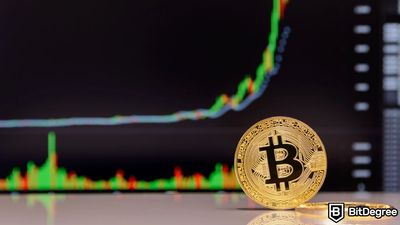Free Airdrop Season 7 is LIVE! Answer fun questions or do simple tasks to earn rewards from the $30K BitDegree prize pool. Participate Now ! 🔥
In today's rapidly evolving digital landscape, the question “What is tokenization?” has been popping up all over the place. If you feel a bit confused about this concept, don’t worry! I'm going to tell you all there is to know about tokenization, meaning you won’t be lost for long.
With every passing day, we witness the emergence of new token types, each with its own unique purpose and utility. From cryptocurrencies (like the ones found on exchanges like Binance, Kraken, or KuCoin) to digital collectibles, tokens have become synonymous with innovation and opportunity.
However, don't get mistaken, tokenization is not a concept that emerged from blockchain technology. In fact, digital tokenization existed years before blockchain did.
So, let’s explore the tokenization meaning in depth, dissecting its various forms and uncovering the potential it holds.

Did you know?
Subscribe - We publish new crypto explainer videos every week!
Sidechains in Crypto Explained EASILY (Animated)


Table of Contents
- 1. What is Tokenization Meaning?
- 1.1. Benefits of Tokenization
- 1.2. Challenges of Tokenization
- 2. Types of Digital Tokens
- 2.1. Transactional Tokens
- 2.2. Governance Tokens
- 2.3. Utility Tokens
- 2.4. Security Tokens
- 2.5. Platform Tokens
- 2.6. Non-Fungible Tokens (NFTs)
- 3. Tokenization in Practice
- 3.1. Card Tokenization
- 3.2. Real Estate
- 3.3. Supply Chain
- 3.4. Art and Collectibles
- 3.5. Gaming and Virtual Economies
- 3.6. Financial Instruments and DeFi
- 4. Conclusions
What is Tokenization Meaning?
The tokenization meaning has become more and more relevant over the past years, especially with the rising popularity of the crypto world. But what is tokenization exactly?
Latest Deal Active Right Now:Head to BitDegree Missions, gather as many Bits as possible & claim your stake of the $30,000 Prize Pool! Don't waste your time & start collecting Bits by completing Missions and referring friends.
At its core, digital tokenization is turning something into a digital token. Investment banks frequently employ tokenization for trading, settlement, and payments[1]. Though, the initial use of tokenization was to swap sensitive data for a non-sensitive digital equivalent. It was first put into practice in 2001 by TrustCommerce.
The company created a credit card tokenization system that replaced the primary account number (PAN) with a random number, which was referred to as a token. This technology significantly improved the security of cardholder data by removing the requirement for retailers to store credit card information on their own servers.
Thus, the explanation of the tokenization meaning goes hand in hand with what credit card tokenization is.
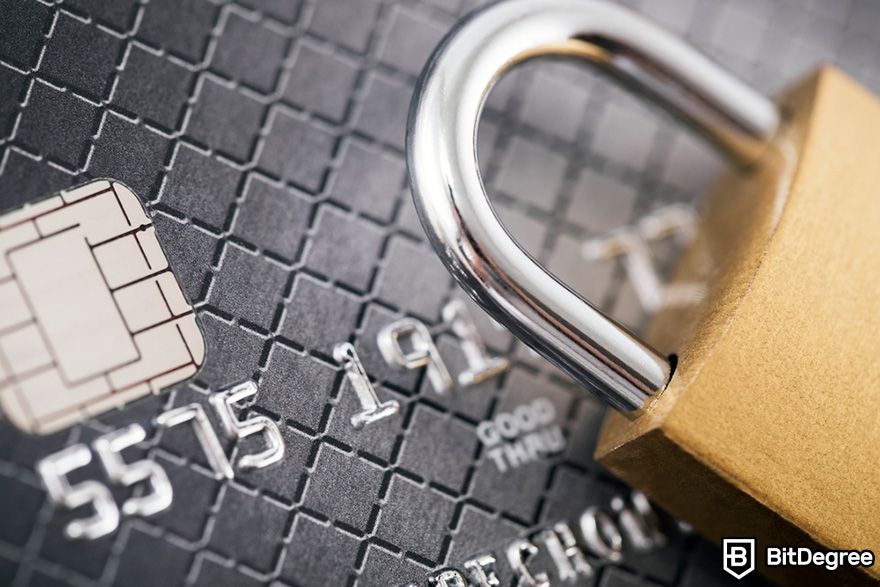
When it comes to tokenization crypto meaning, it refers to the process of representing real-world assets or digital resources as digital tokens on a blockchain or distributed ledger technology. It's like breaking down tangible or intangible items into smaller, more manageable units that can be easily tracked, traded, and used within a decentralized network.
These assets go through the process of tokenization, meaning they become digital tokens, and are built on networks like Ethereum or Binance Smart Chain. They can represent different forms of value, such as currencies, securities, or unique digital assets like art, collectibles, and even in-game items.
Tokenization meaning opens up a world of possibilities by harnessing the advantages of blockchain technology. It facilitates secure, transparent, and efficient transactions without intermediaries. This transformative power has caught the attention of industries like finance, real estate, supply chain management, and even art and entertainment.
Tokenization also brings such benefits as increased liquidity, improved transparency, fractional ownership, and easier access to assets and services. However, it presents challenges and considerations that need to be addressed for widespread adoption as well.
Benefits of Tokenization
As I just mentioned, the implementation of the tokenization definition in our society brings a variety of benefits. So, let's look into them in more detail.
✓ Increased Liquidity
One of the significant benefits of the tokenization meaning applied is the potential to unlock liquidity in traditionally illiquid assets. By representing tangible or intangible assets as tokens on a blockchain or distributed ledger, fractional ownership becomes possible.
This means that individuals can invest in smaller portions of an asset, making it more accessible and enabling greater liquidity in markets that were previously difficult to access.
✓ Enhanced Transparency
Tokenization brings transparency to transactions and ownership records. The use of blockchain technology allows for immutable and auditable records, providing a clear and trustworthy view of ownership and transaction history.
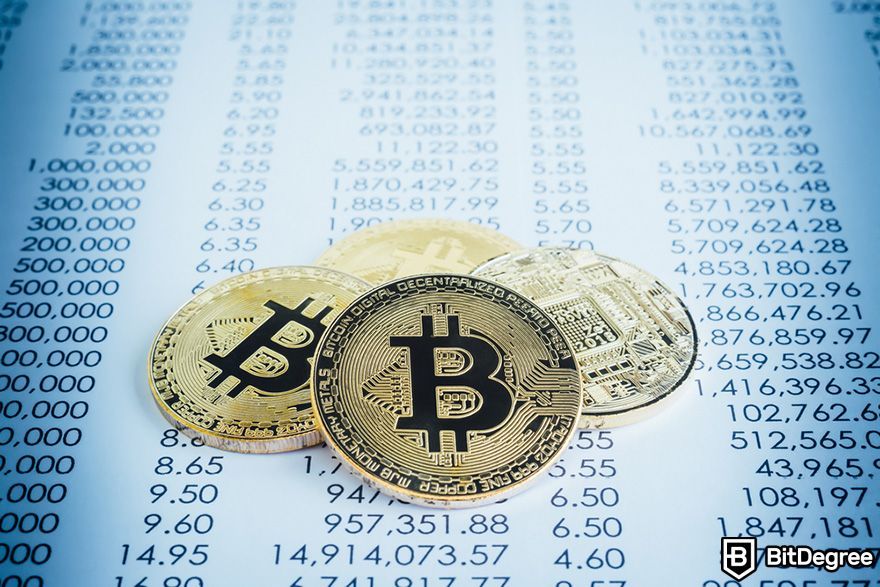
This increased transparency helps to build trust among participants, mitigating fraud and reducing the need for intermediaries.
✓ Improved Efficiency
Traditional processes often involve cumbersome paperwork, intermediaries, and time-consuming procedures. Tokenization streamlines these processes by automating them on a blockchain.
Smart contracts can be utilized to automate various tasks, such as dividend distributions, voting mechanisms, or compliance requirements. This automation reduces costs, minimizes human error, and speeds up the overall transaction process.
✓ Extra Security
Tokenization increases security by replacing sensitive data with unique tokens, minimizing data exposure, simplifying compliance, enhancing data integrity, and improving authentication.
As such, it reduces the risk of unauthorized access, data breaches, and the impact of potential breaches while protecting sensitive information. An example of this lies in credit and debit card tokenization. What is card tokenization?

Card tokenization, meaning the replacement of credit card details with unique tokens, is a process that enhances security by reducing data exposure, mitigating the risk of breaches, and ensuring compliance with industry standards. You'll find a more in-depth explanation of this concept below.
✓ Global Accessibility
The implementation of tokenization, meaning turning investments and assets into tokens, has the potential to democratize access to previously inaccessible transactions. With digital tokens, anyone with an internet connection can participate in global markets, irrespective of their location or socioeconomic status.
This opens up new opportunities for individuals who were previously excluded from traditional investment avenues, promoting financial inclusion and economic empowerment.
✓ Fractional Ownership and Investment Opportunities
The very tokenization definition surged to allow for the fractional ownership of assets, enabling individuals to invest in a portion of an asset rather than buying it outright. This fractional ownership unlocks investment opportunities in high-value assets that may have been out of reach for many investors previously.

For instance, real estate properties, fine art, or venture capital investments can be divided into smaller tokens, allowing broader participation and diversification.
✓ Programmable Assets
Digital tokens can be programmed to possess specific functionalities and capabilities through the use of smart contracts. This introduces new possibilities, such as automated revenue sharing, dynamic pricing, conditional ownership rights, and more.
These programmable features enable the creation of innovative business models and open up avenues for novel applications across industries.
However, it's important to note that while tokenization offers numerous benefits, it's not a one-size-fits-all solution. Nonetheless, the transformative potential of tokenization in terms of liquidity, transparency, efficiency, accessibility, fractional ownership, and programmability cannot be overlooked.
Challenges of Tokenization
Now, let's take a closer look at some of the key obstacles that can arise when implementing strategies provided by tokenization, meaning challenges faced by tokenized products.
✗ Regulatory Compliance Challenges
One of the major challenges associated with tokenization is navigating the complex landscape of regulatory compliance. Different jurisdictions have varying regulations and laws surrounding digital tokens, and it's important for businesses and individuals to ensure they comply with these requirements. Failure to do so can result in legal consequences and hinder the successful adoption of tokenization.
✗ Security Risks
As with any digital system, security is a crucial concern in tokenization. Since tokens represent digital assets and value, they become attractive targets for hackers and cybercriminals.
Token issuers and holders must implement robust security measures to protect against theft, fraud, and unauthorized access. This includes secure storage solutions (like cold storage), strong encryption techniques, and regular security audits.
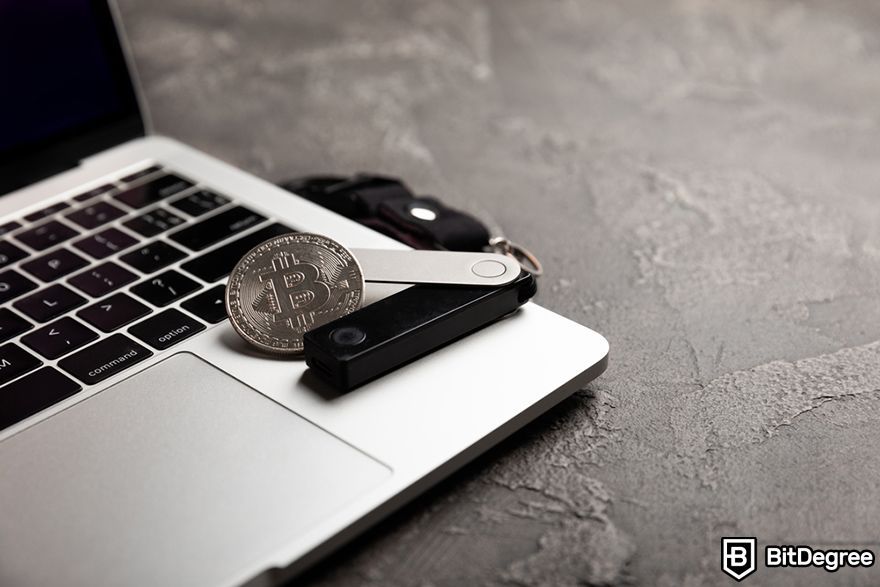
Speaking of security measures, one of the best ways to protect your digital assets is storing them in a hardware wallet (like Ledger Nano X, for example).
✗ The Lack of Interoperability and Standards
Another consideration is the lack of standardized frameworks and interoperability among different tokenization platforms and blockchain networks. This fragmentation can pose challenges for seamless integration and interoperability between tokens issued on different platforms. Establishing common standards and protocols is essential to enable efficient token transfers and interoperability across various systems.
✗ Scalability Issues
Scalability is an important factor to consider when implementing tokenization on a large scale. As the number of tokens and transactions increases, blockchain networks may face scalability issues, leading to slower transaction speeds and higher costs. Overcoming these scalability challenges requires innovative solutions, such as layer-2 protocols, sidechains, or sharding.
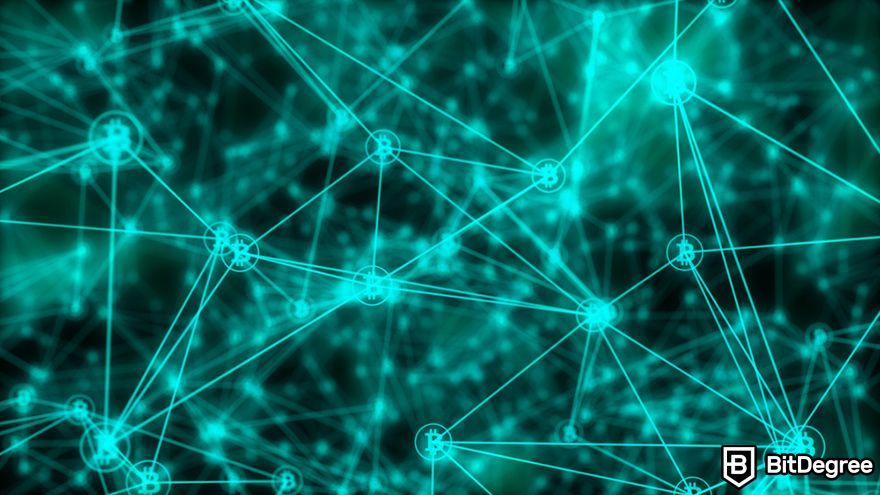
✗ Token Valuation and Market Volatility Challenges
Token valuation can be a complex task, especially for newly issued tokens. Determining the intrinsic value of a token and accurately assessing its market price can be challenging due to factors such as market speculation, lack of historical data, and regulatory uncertainties. Besides, the digital token market is highly volatile overall, so it can easily cause rapid price fluctuations.
You can find current prices and other useful statistics about the most popular crypto assets on BitDegree's crypto price tracker.
✗ User Adoption and Education Challenges
Tokenization introduces a paradigm shift in how digital assets are created, traded, and utilized. Achieving widespread user adoption requires educating users about the benefits and intricacies of tokenization.
They need to understand concepts like private keys, wallets, and smart contracts, as well as the potential risks involved, which can get quite complicated. Nevertheless, improving user experience and providing accessible educational resources can foster greater acceptance and adoption of tokenization.
So, while tokenization offers transformative potential, it's crucial to address the challenges and considerations that come with it.
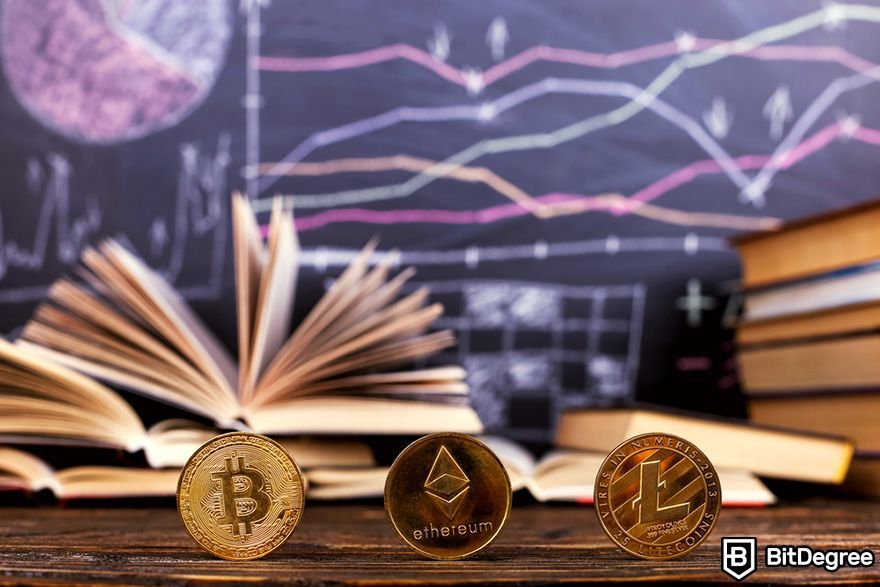
Overcoming regulatory hurdles, ensuring robust security measures, establishing interoperability standards, tackling scalability issues, accurately valuing tokens, and promoting user adoption are essential steps toward harnessing the full power of tokenization in the digital age.
By addressing these challenges, we can unlock the myriad possibilities that tokens offer in revolutionizing various industries and economic systems.
Types of Digital Tokens
So, now you know what is tokenization meaning, but did you know that there is a variety of digital token types, each of which has a different purpose and function? From enabling seamless transactions to empowering decentralized governance and digital asset ownership, these tokens bring forth a new era of possibilities and innovations.
This includes transactional, governance, utility, security, platform, and non-fungible tokens. Let's look into them in more detail.
Transactional Tokens
Transactional tokens, classified as digital currencies, play a pivotal role in the realm of digital transactions, aiming to make the process seamless and convenient. These tokens serve as a medium of exchange within a specific digital system, enabling users to transfer value or assets effortlessly. USDT, USDC, BUSD, and BTC are all transactional tokens.
One can say these tokens were the first assets to give tokenization meaning in the first place.
Consider transactional tokens as the digital equivalent of traditional money. They are designed to facilitate various types of transactions, making online shopping a breeze, simplifying cross-border money transfers, and functioning as a digital form of currency.
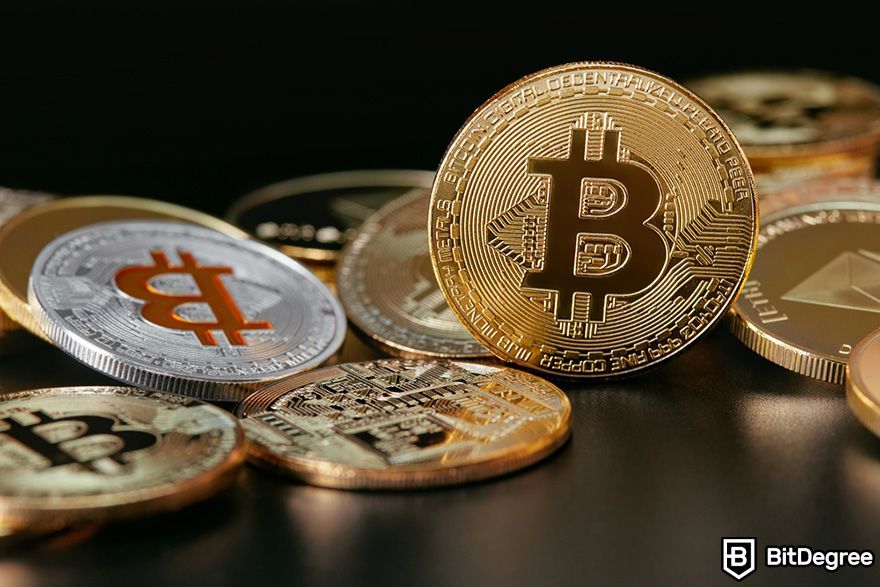
Their primary objective is to ensure that transactions in the digital sphere are not only secure but also efficient and hassle-free. With transactional tokens, users can enjoy the benefits of swift and reliable digital transactions.
Whether you're purchasing goods and services online, sending money to someone in another part of the world, or even engaging with peer-to-peer digital exchanges, these tokens provide the necessary infrastructure for seamless and reliable transactions.
Governance Tokens
Governance tokens keep immense significance within decentralized networks or platforms, granting their holders a unique power to influence and shape the direction of the ecosystem. They act as catalysts for individual empowerment, enabling active participation in critical decision-making processes.
Imagine governance tokens as superpowers that bestow users with the ability to make a real impact. This active involvement allows users to contribute their perspectives, ideas, and preferences to guide a project or ecosystem's future.

It empowers users to influence the network's policies, features, or protocols, and contribute to its ongoing development. This democratic approach ensures that the decentralized platform evolves in alignment with the values and needs of its community. It brings forth a sense of collective decision-making, where each token holder has the potential to shape and define the future of the ecosystem.
Some examples of governance tokens include UNI, APE, BNB, and AAVE.

Did you know?
Subscribe - We publish new crypto explainer videos every week!
What is a Crypto Wallet? (Explained With Animation)


Utility Tokens
Utility tokens are a significant tokenization definition within the realm of digital ecosystems, serving a distinct purpose. Their primary function is to grant users access to specific products or services available within the ecosystem. Think of them as digital passes that allow entry to certain functionalities or offerings.
To illustrate this, let's consider decentralized applications (dApps) as an example. In the context of dApps, utility tokens act as the key that unlocks a range of features or services offered by the application. These tokens are akin to a prepaid card or subscription, providing users with the possibility to utilize different aspects of the dApp's functionalities.

Utility tokens act as the driving force behind the usage and functionality of the platform or network they are affiliated with. They ensure that interactions within the ecosystem are smooth, seamless, and efficient.
LINK, BAT, ZIL, and BNB are a few of the many utility tokens on the market.
Security Tokens
Security tokens are digital versions of assets that have real value, like shares in a company, real estate, or equity. These tokens follow rules set by regulators and laws related to securities.
The cool thing about security tokens is that they enable fractional ownership, so we can own just a piece of an asset instead of the whole thing. This makes it easier for more people to get involved. Besides, security token owners get a share of the asset's profits.

Though, do note that while security tokens are pretty similar to traditional cryptocurrencies, as they are also created and stored on a blockchain, they differ in their use and purpose. A security token is meant to be used in the same way as a bond, stock, or other type of investment asset, unlike a cryptocurrency, which is initially intended to be used as a means of exchange or a payment method.
Blockchain Capital (BCAP), Sia Funds, and INX are a few examples of security tokens.
Platform Tokens
Platform tokens play a crucial role within a specific blockchain platform or protocol, serving as the primary medium of value exchange. Think of them as the special currency designed exclusively for that digital ecosystem. BNB, SOL, or ADA are all platform tokens, for example.
These tokens have a powerful incentivizing effect on participants, encouraging them to actively contribute to the network's security, maintenance, and development. By holding and utilizing platform tokens, individuals become more invested in the platform's success, as they have a direct stake in its operations and future.
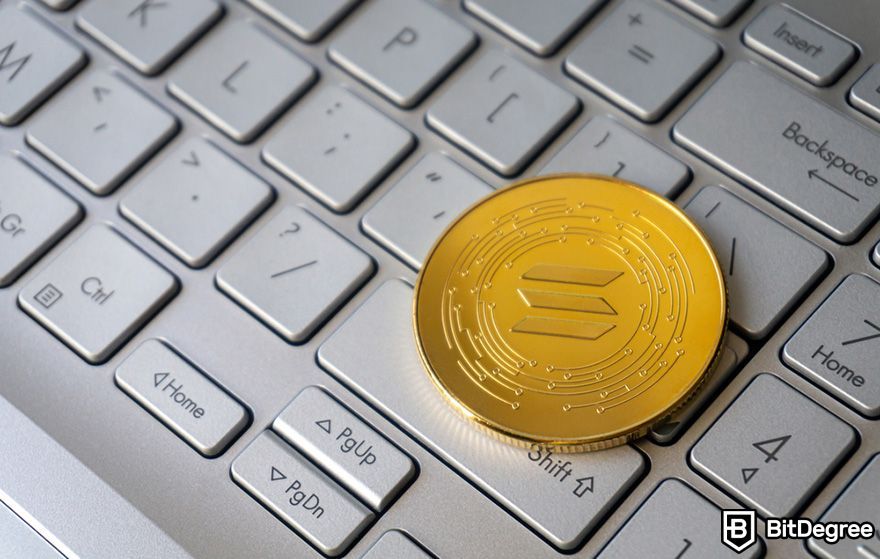
Moreover, many platform tokens offer practical utility by serving as a form of payment for transaction fees (which makes them utility tokens as well). This ensures that operations within the platform run smoothly and efficiently.
Non-Fungible Tokens (NFTs)
Non-fungible tokens, or NFTs, have emerged as a fascinating phenomenon capturing significant attention in recent times. These tokens have revolutionized the digital world by representing one-of-a-kind digital assets, such as artwork, collectibles, virtual real estate, and more. I'm sure you've heard of the Bored Ape Yach Club or CryptoPunks NFT collections.
What sets NFTs apart from traditional cryptocurrencies or other tokens is their inherent uniqueness. Unlike fungible tokens that can be exchanged on a one-to-one basis, each NFT carries its own distinct value and properties. This uniqueness is ingrained in the token's underlying technology, ensuring that no two NFTs are alike.
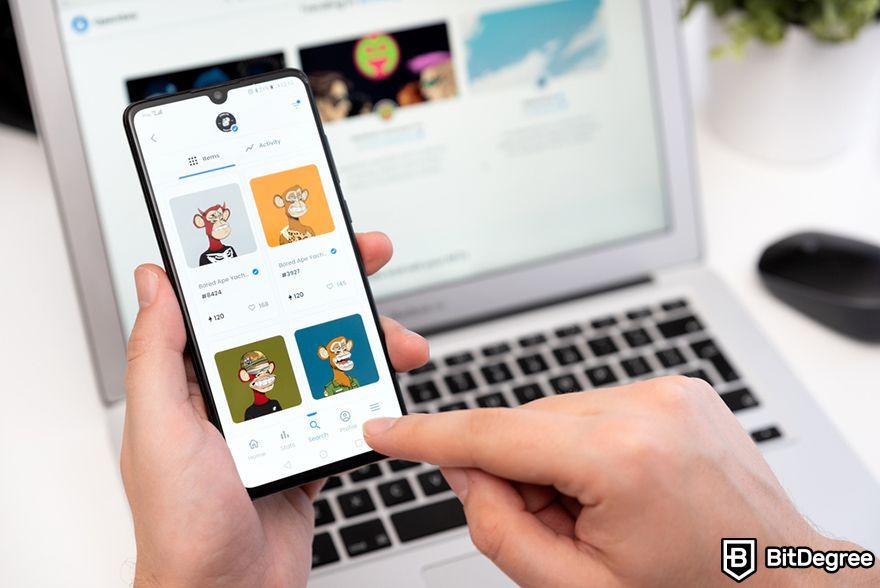
The concept of NFTs has brought about a paradigm shift in establishing ownership and provenance of digital creations. By utilizing blockchain technology, NFTs provide an unprecedented way to verify and authenticate the ownership and origin of these digital assets. Thus, they act as digital certificates of authenticity, guaranteeing the uniqueness and originality of the item.
For artists, creators, and collectors, NFTs offer new opportunities to showcase and monetize their digital works. Artists can tokenize their artwork as NFTs, enabling them to retain ownership rights and receive direct royalties from future sales. Collectors, on the other hand, can acquire and trade these unique digital assets, immersing themselves in the world of digital art and collectibles.
Tokenization in Practice
As you can probably see, tokenization, meaning the process of turning assets into digital tokens, has gained significant traction in the virtual age. Therefore, various industries are exploring its potential to revolutionize traditional systems and processes.
So, let's delve into some real-world examples and applications of tokenization, showcasing how this transformative concept is being put into practice.
Card Tokenization
Questions like "What is card tokenization?” or "What is credit card tokenization?" are quite frequently asked because it might be pretty hard to understand how can you turn your card into a token and why would you do that in the first place.
But it's not actually about turning your card into a token. Card tokenization (credit and debit included) is a process that turns sensitive payment card information (name, card number, expiration date, etc.) into a token. This token is then used to represent the card information for transactions, while the sensitive data is securely stored by a trusted third party, such as a payment gateway or a card issuer.
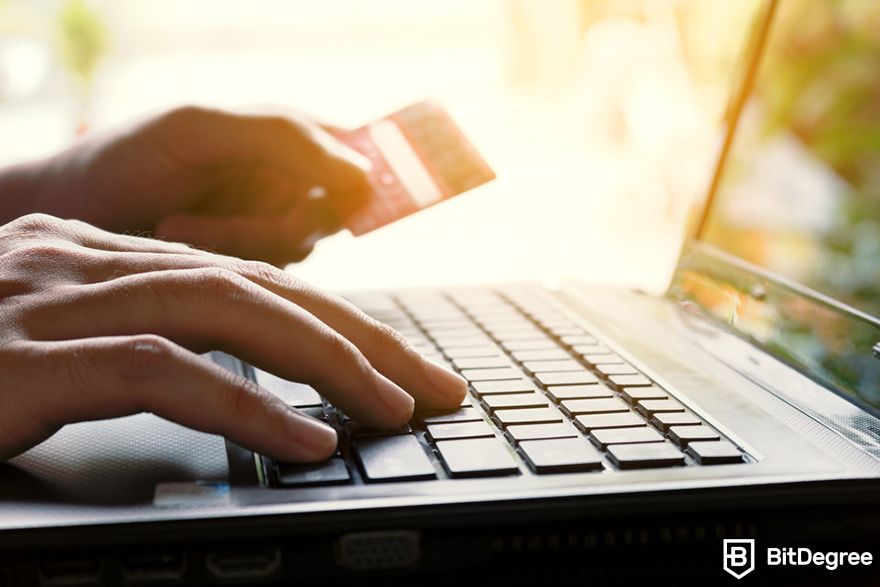
To fully understand the card tokenization meaning, consider this example:
Imagine you frequently shop online and have saved your credit card information on various e-commerce websites. One day, you receive an email from one of those websites notifying you that their database has been breached and your personal and financial information may have been compromised.
In this situation, if the website had implemented card tokenization, the potential damage caused by the data breach would be significantly mitigated. The hackers would only gain access to the tokens, which are essentially useless outside the payment ecosystem. The stolen tokens cannot be used to conduct fraudulent transactions or reveal your actual card details.
So, the most straightforward answer to the question "What is card tokenization?" is that it's a way to enhance the security of your private information. Besides, as mentioned before, card tokenization is the very first type of tokenization implementation overall.
Real Estate
One area where tokenization is making waves is in the real estate industry.
Traditionally, investing in real estate requires substantial capital and complex legal processes. However, tokenization allows for fractional ownership, dividing properties into digital tokens.

These tokens represent shares in the property, enabling smaller investors to participate. It also enhances liquidity by enabling easy buying and selling of these digital assets, making real estate investment more accessible and flexible.
Supply Chain
Tokenization is also reshaping supply chain management by enhancing transparency and traceability. By tokenizing products, each item can be assigned a unique digital token that stores relevant information, such as origin, manufacturing details, and ownership history.
This provides an immutable and transparent record, ensuring authenticity, reducing fraud, and enabling more efficient tracking throughout the supply chain. Consumers can easily verify the authenticity and provenance of products, fostering trust and accountability.
Art and Collectibles
The art and collectibles market has experienced a significant transformation through tokenization, particularly with the rise of NFTs. As mentioned before, they enable digital ownership of unique assets, such as artworks, music, videos, and virtual real estate.

By tokenizing these assets, creators can prove authenticity, establish provenance, and enforce ownership rights. NFTs have opened up new possibilities for artists, allowing them to monetize their work directly and reach a global audience, while collectors can easily trade and verify the authenticity of digital collectibles.
Gaming and Virtual Economies
Tokenization is also revolutionizing the gaming industry and virtual economies by introducing digital assets with real-world value. In many online games, players can acquire virtual items or currencies that hold value within the game's ecosystem.
By tokenizing these assets, players have true ownership and can trade or sell them on secondary markets. This creates vibrant virtual economies, blurring the lines between digital and physical assets.
Tokenization also enables interoperability between different games and platforms, allowing players to use their virtual assets across multiple experiences.

- Secure and reliable
- Accepts fiat currencies
- Lots of trading options
- Reputable exchange
- Accepts fiat currencies
- Offers various trading options

- Fiat currencies - accepted
- Simple to use
- Accepts only the most trustworthy cryptocurrencies
- A leading cryptocurrency exchange platform
- Best for beginner investors
- Accepts fiat currencies

- Fully reserved and transparent
- Multiple tradable asset classes
- Over 300 supported cryptos
- Over 300 cryptocurrencies
- Secure & transparent
- Fully reserved
Financial Instruments and DeFi
Tokenization has immense potential in the realm of financial instruments and DeFi. Assets such as stocks, bonds, commodities, and derivatives can be represented as digital tokens, unlocking new possibilities for liquidity, fractional ownership, and programmability. Though, note that DeFi has the potential of tokenizing any digital or physical asset[2], not only traditional financial services.

DeFi platforms leverage tokenization to create innovative financial services, such as lending, borrowing, and automated trading, all governed by smart contracts. Tokenization in DeFi opens up access to financial services globally, providing an alternative to traditional banking systems.
All in all, tokenization meaning is a dynamic concept that continues to evolve, and these examples are just the tip of the iceberg. As this technology matures and more industries embrace it, we can expect further innovations and disruptions in various sectors.
Conclusions
Put shortly, tokenization, meaning turning real-world or digital assets into digital tokens, has become a revolutionary power in the digital era, completely transforming our perception and interaction with assets, systems, and economies.
As the tokenization definition and processes continue to evolve, we are witnessing their practical implementation in many sectors, including real estate, supply chain, art, gaming, and so on. Its transformative potential enables equitable access, enhances transparency, and fosters innovation throughout various industries.
But most importantly, tokenization gave birth to thousands of tokens crypto enthusiasts hold and trade today. Speaking of that, make sure to use a reputable exchange (like Binance, Kraken, or KuCoin) for trading your tokens, as well as a secure crypto wallet for storing them (like Ledger Nano X).
The content published on this website is not aimed to give any kind of financial, investment, trading, or any other form of advice. BitDegree.org does not endorse or suggest you to buy, sell or hold any kind of cryptocurrency. Before making financial investment decisions, do consult your financial advisor.
Scientific References
1. H. Pithadia, E. Fenoglio, B. Batrinca, et al.: 'Data Assets: Tokenization and Valuation';
2. P. Treleaven, A. Greenwood, H. Pithadia, et al.: 'Web 3.0 Tokenization and Decentralized Finance (DeFi)'.





